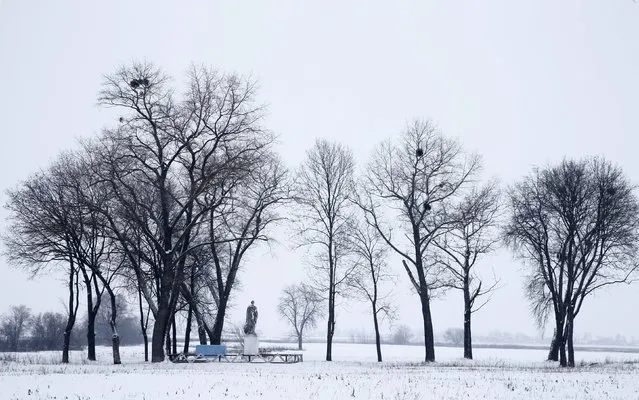
A World War Two monument is seen near the 30 km (19 miles) exclusion zone around the Chernobyl nuclear reactor, near the village of Babchin, Belarus, January 26, 2016. What happens to the environment when humans disappear? Thirty years after the Chernobyl nuclear disaster, booming populations of wolf, elk and other wildlife in the vast contaminated zone in Belarus and Ukraine provide a clue. On April 26, 1986, a botched test at the nuclear plant in Ukraine, then a Soviet republic, sent clouds of smouldering radioactive material across large swathes of Europe. Over 100,000 people had to abandon the area permanently, leaving native animals the sole occupants of a cross-border “exclusion zone” roughly the size of Luxembourg. (Photo by Vasily Fedosenko/Reuters)
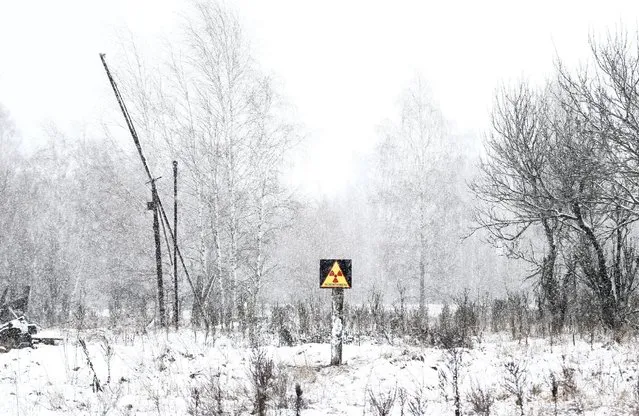
A radiation sign is seen in the 30 km (19 miles) exclusion zone around the Chernobyl nuclear reactor in the abandoned village of Dronki, Belarus, February 11, 2016. (Photo by Vasily Fedosenko/Reuters)
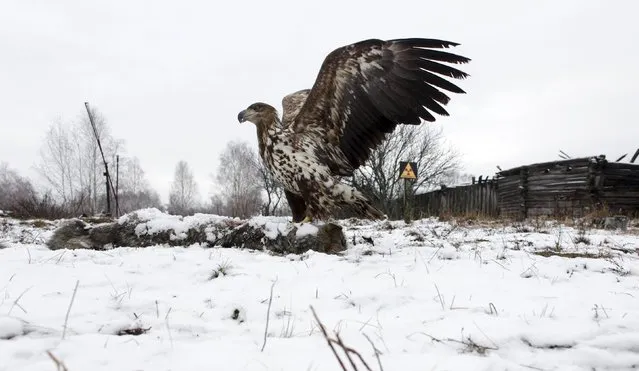
A white-tailed eagle lands on a wolf's carcass in the 30 km (19 miles) exclusion zone around the Chernobyl nuclear reactor, in the abandoned village of Dronki, Belarus, February 15, 2016. (Photo by Vasily Fedosenko/Reuters)
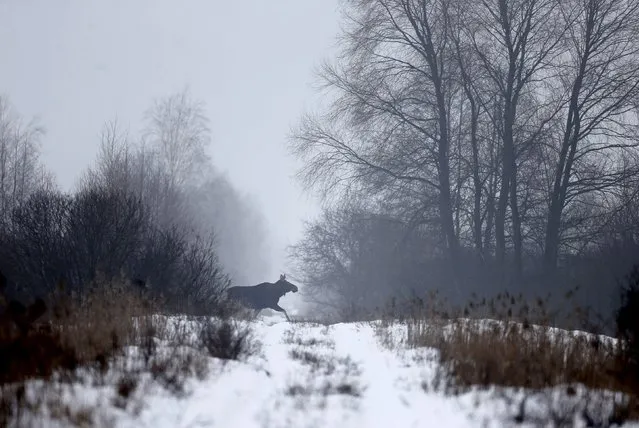
An elk runs in the 30 km (19 miles) exclusion zone around the Chernobyl nuclear reactor, near the village of Babchin, Belarus, January 27, 2016. (Photo by Vasily Fedosenko/Reuters)
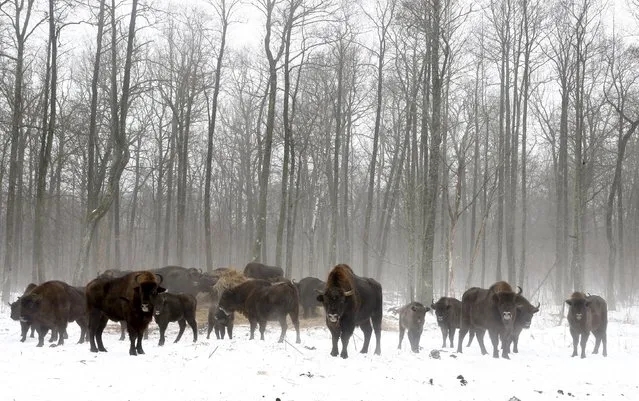
Bisons are seen at a bison nursery in the 30 km (19 miles) exclusion zone around the Chernobyl nuclear reactor near the abandoned village of Dronki, Belarus, January 28, 2016. (Photo by Vasily Fedosenko/Reuters)
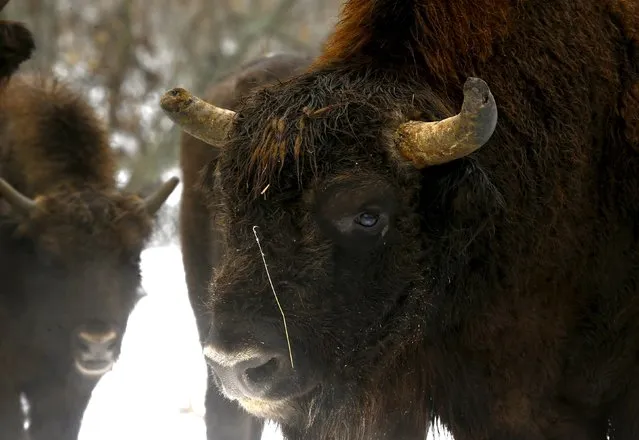
Bisons are seen at a bison nursery in the 30 km (19 miles) exclusion zone around the Chernobyl nuclear reactor near the abandoned village of Dronki, Belarus, January 28, 2016. (Photo by Vasily Fedosenko/Reuters)
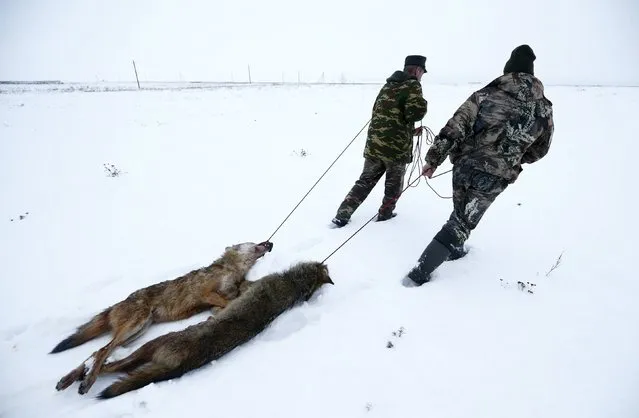
Hunters drag wolves killed in a field outside of the 30 km (19 miles) exclusion zone around the Chernobyl nuclear reactor, near the village of Khrapkov, Belarus, January 27, 2016. (Photo by Vasily Fedosenko/Reuters)
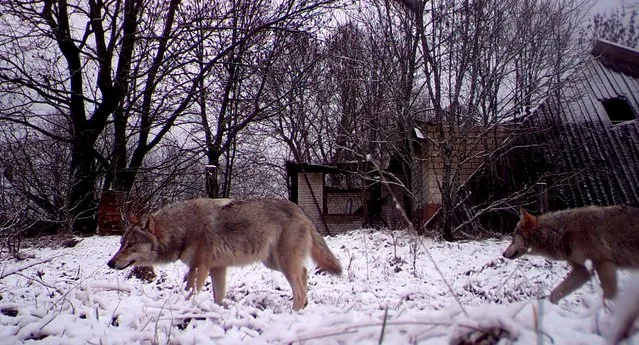
Wolves walk in the 30 km (19 miles) exclusion zone around the Chernobyl nuclear reactor in the abandoned village of Orevichi, Belarus, February 25, 2016. (Photo by Vasily Fedosenko/Reuters)
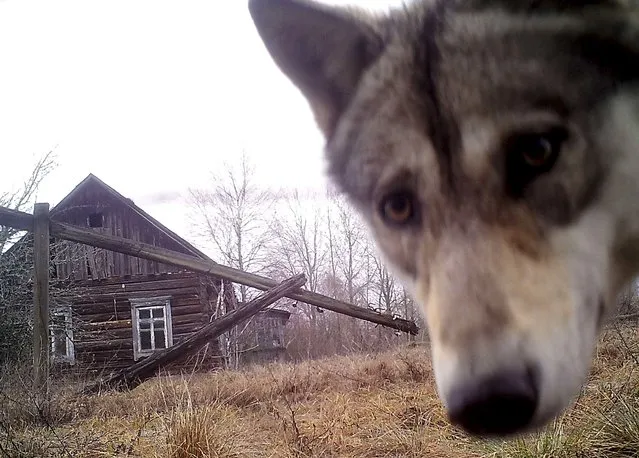
A wolf looks into the camera at the 30 km (19 miles) exclusion zone around the Chernobyl nuclear reactor in the abandoned village of Orevichi, Belarus, March 2, 2016. (Photo by Vasily Fedosenko/Reuters)
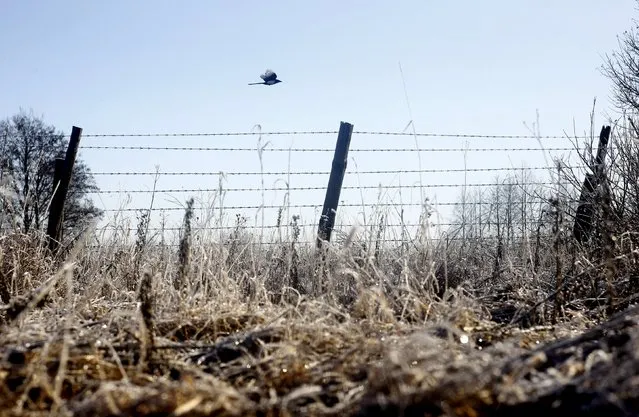
A magpie flies over a barbed wire fence at the 30 km (19 miles) exclusion zone around the Chernobyl nuclear reactor near the abandoned village of Babchin, Belarus, February 18, 2016. (Photo by Vasily Fedosenko/Reuters)
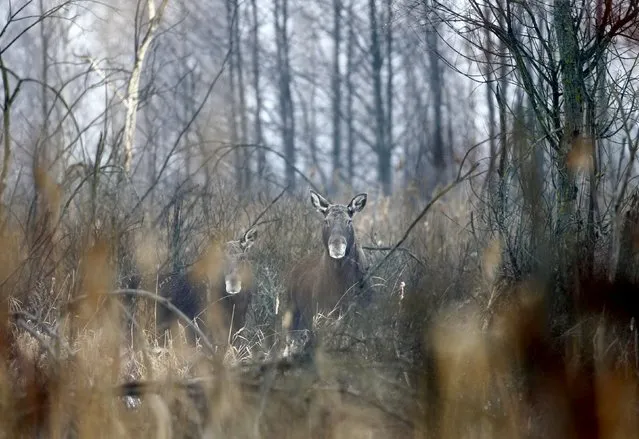
Elks are seen in the 30 km (19 miles) exclusion zone around the Chernobyl nuclear reactor near the abandoned village of Dronki, Belarus, January 28, 2016. (Photo by Vasily Fedosenko/Reuters)
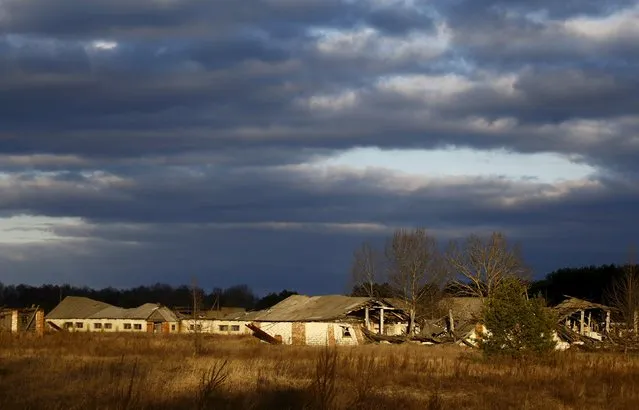
Ruined farm's buildings are seen in the 30 km (19 miles) exclusion zone around the Chernobyl nuclear reactor in the abandoned village of Pogonnoe, Belarus, March 13, 2016. (Photo by Vasily Fedosenko/Reuters)
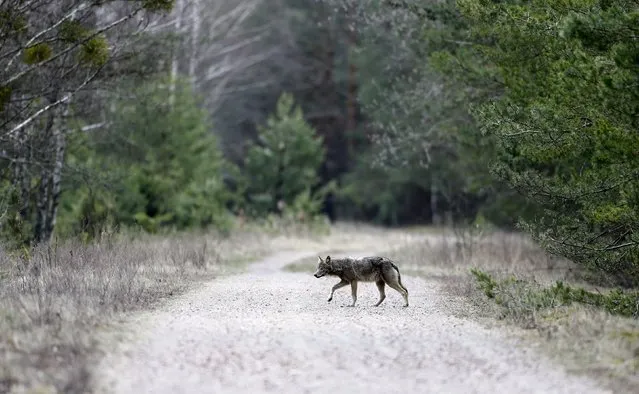
A wolf crosses a road in a forest in the 30 km (19 miles) exclusion zone around the Chernobyl nuclear reactor near the abandoned village of Dronki, Belarus, April 2, 2016. (Photo by Vasily Fedosenko/Reuters)
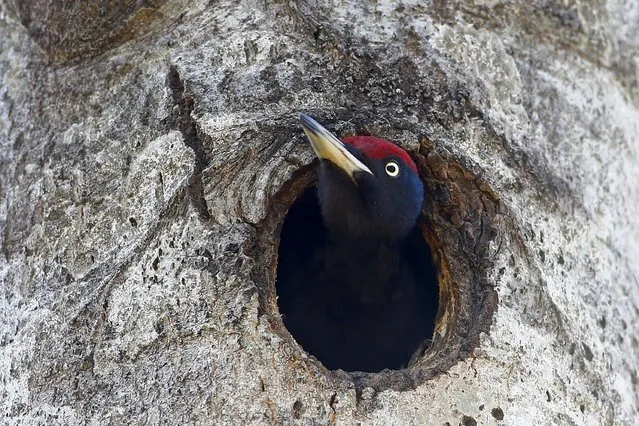
A woodpecker looks out of a hollow in a tree in the 30 km (19 miles) exclusion zone around the Chernobyl nuclear reactor near the abandoned village of Babchin, Belarus, April 3, 2016. (Photo by Vasily Fedosenko/Reuters)
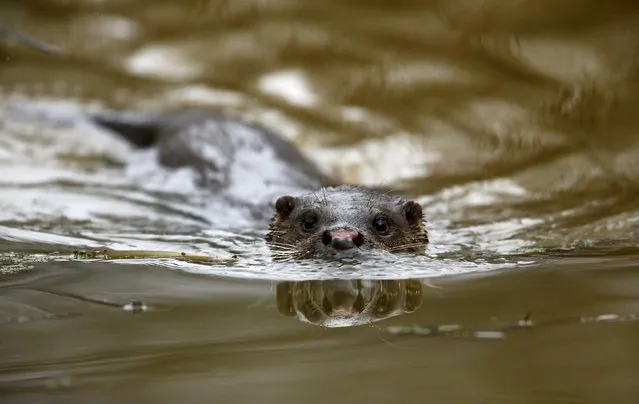
An otter swims in a river in the 30 km (19 miles) exclusion zone around the Chernobyl nuclear reactor in the abandoned village of Pogonnoe, Belarus, March 13, 2016. (Photo by Vasily Fedosenko/Reuters)
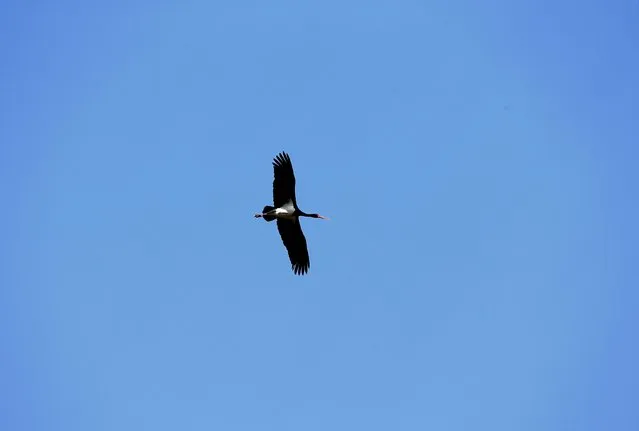
A black stork flies through the 30 km (19 miles) exclusion zone around the Chernobyl nuclear reactor near the abandoned village of Dronki, Belarus, April 2, 2016. (Photo by Vasily Fedosenko/Reuters)
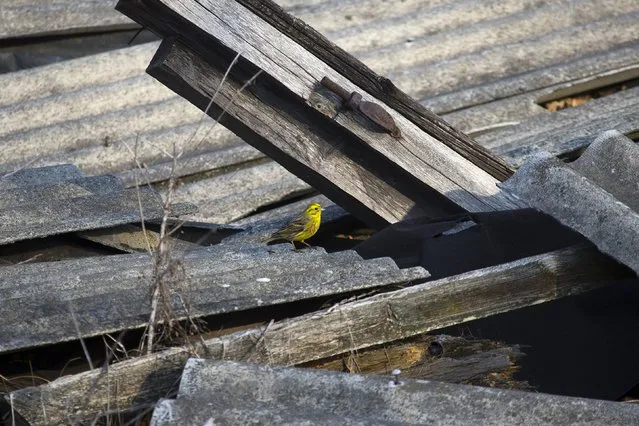
A yellowhammer is seen on the remains of a house at the 30 km (19 miles) exclusion zone around the Chernobyl nuclear reactor in the abandoned village of Orevichi, Belarus, March 12, 2016. (Photo by Vasily Fedosenko/Reuters)
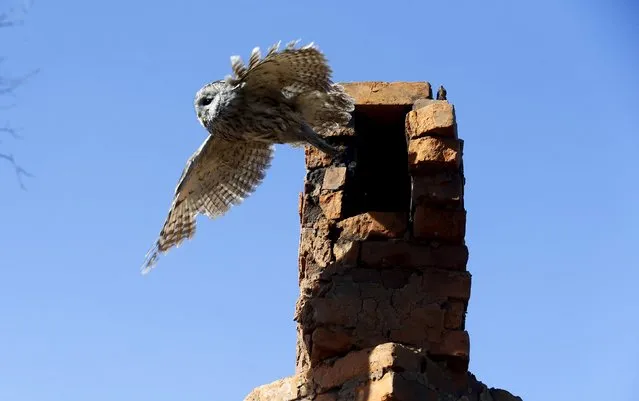
A tawny owl leaves a chimney in the 30 km (19 miles) exclusion zone around the Chernobyl nuclear reactor in the abandoned village of Kazhushki, Belarus, March 16, 2016. (Photo by Vasily Fedosenko/Reuters)
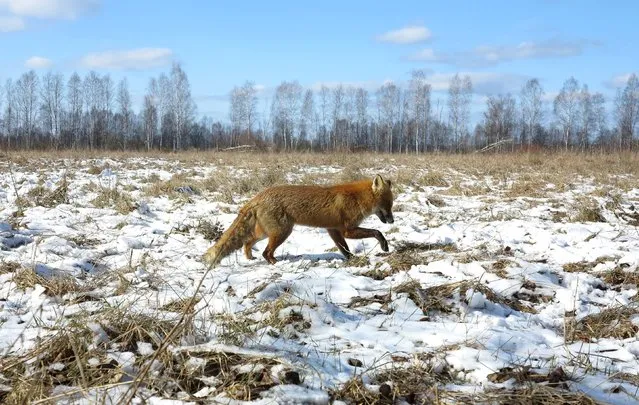
A fox walks through the 30 km (19 miles) exclusion zone around the Chernobyl nuclear reactor near the abandoned village of Babchin, Belarus, March 5, 2016. (Photo by Vasily Fedosenko/Reuters)
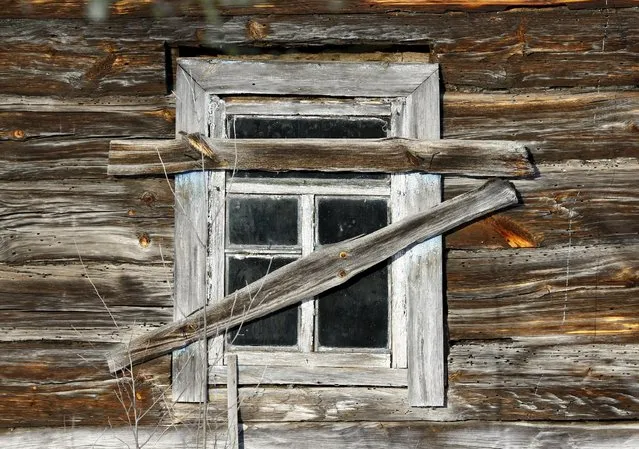
An abandoned house is seen in the 30 km (19 miles) exclusion zone around the Chernobyl nuclear reactor in the abandoned village of Dronki, Belarus, January 28, 2016. (Photo by Vasily Fedosenko/Reuters)
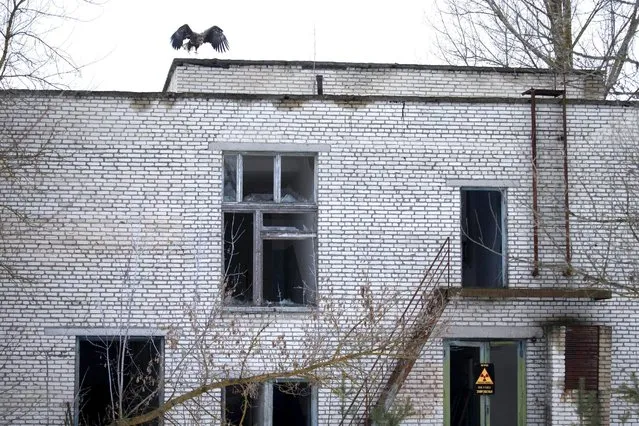
A white-tailed eagle sits on the roof of an abandoned school near the 30 km (19 miles) exclusion zone around the Chernobyl nuclear reactor, in the abandoned village of Tulgovichi, Belarus, January 29, 2016. (Photo by Vasily Fedosenko/Reuters)
08 Apr 2016 15:13:00,
post received
0 comments
